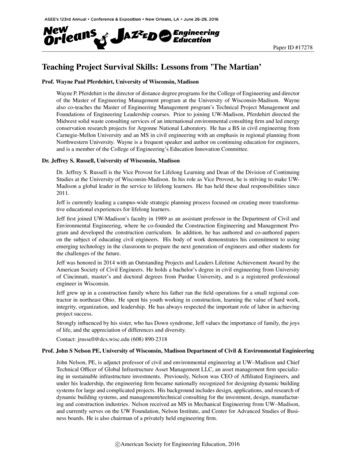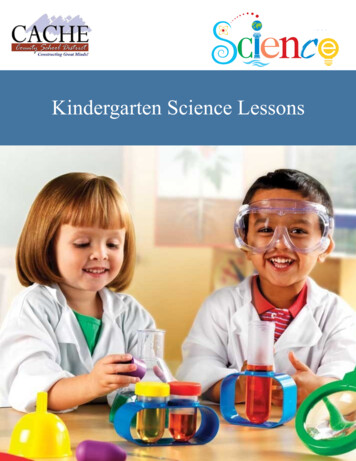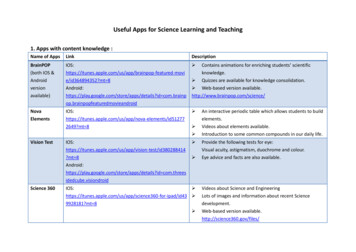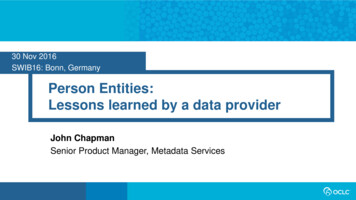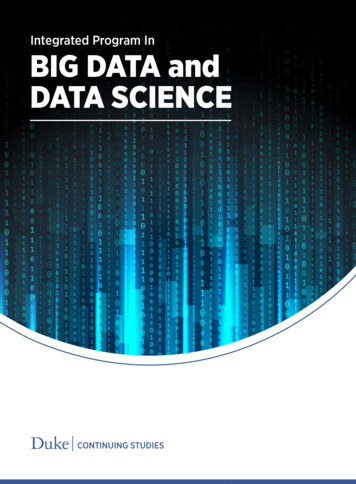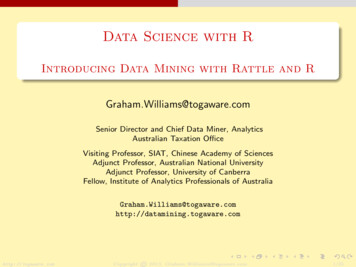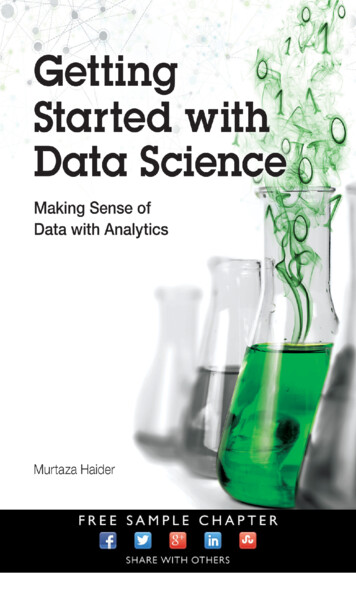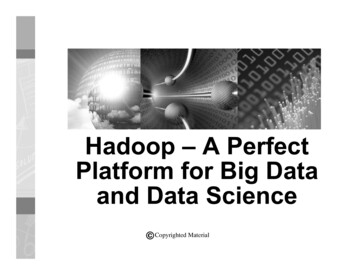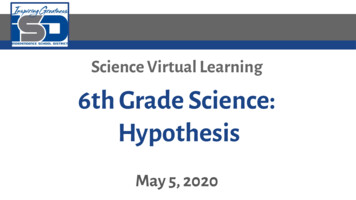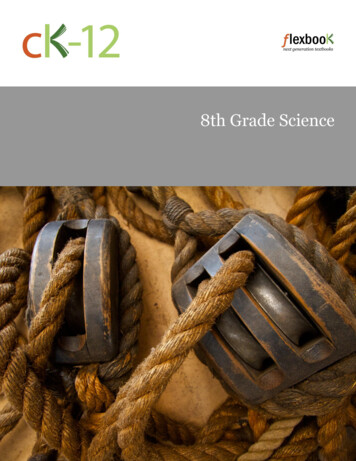
Transcription
Lessons from teachingdata science to over amillion peopleSean KrossCRUNCH ConferenceBudapest2017-10-20
A little aboutme Formerly: The JohnsHopkins Data Science LabCurrently: The Universityof California San DiegoMain interests: Data Science Online Education Open Science
The Johns Hopkins Data Science LabJeff Leek@jtleekRoger Peng@rdpengjhudatascience.orgBrian Caffo@bcaffo
?
Part 1: The DataScience Specialization
tats/
Forecasting at Scale by Sean Taylor and BenjaminLetham (Facebook) How to Share Data for Collaboration by Shannon Ellisand Jeffrey Leek (Johns Hopkins Data Science Lab) Opinionated Analysis Development by Hilary Parker(Stitch Fix) Data Organization in Spreadsheets by Karl Broman andKara Woo (The University of Wisconsin & DataCamp)
Rationale: “Let’s put in-person coursesonline to augment in-person teaching.”We were on to something.
Nine Courses1. The Data Scientist’s Toolbox2. R Programming3. Getting and Cleaning Data4. Exploratory Data Analysis5. Reproducible Research6. Statistical Inference7. Regression Models8. Practical Machine Learning9. Developing Data Products
Enrollment and Completions of the Data Science Specialization
Key innovations
Give everything away for free
Capstones - Portfolios - Jobs
Run every courseevery month
Integrate contenthttps://ubc-mds.github.io/
Lessons from Alumni:The Data Science Specialization Data scientists want to create online artifacts. See StitchFix and Stack Overflow’s technical blogs. Also see opensource software projects like Prophet, a forecasting libraryfrom Facebook. Data Scientists want to be able to do in-house datascience training. Domain expertise is important but so is buy-in frommanagement.
Part 2: ExecutiveData Science
Lessons from Alumni:Executive Data Science Data science technologies tend to “trickle up.” (Especiallygood to know if you develop data science technologies.) Invest your precious time into basic statistics over basicprogramming. Your expectations for developing an analysis shouldresemble your expectations for developing software.
Part 3: Mastering SoftwareDevelopment in R
DataScientistDataEngineer
Lessons from Alumni:Mastering Software Development in R The field of data science is still taking form. Experimentation with roles can give you a competitiveadvantage. Taking risks is easier of you’re part of a community.
?
Learn how to use the command linefrom the ground up.No previousexperienceexpected.The gateway intocomputationallyintensive tasks.Includes anintroduction tocloud computing.Free!leanpub.com/unix
Thank you!Questions?Link to these slides: seankross.com/crunch-talk/Let’s talk: seankross@ucsd.eduFind me on Twitter: @seankross
The Data Scientist’s Toolbox 2. R Programming 3. Getting and Cleaning Data 4. Exploratory Data Analysis 5. Reproducible Research 6. Statistical Inference 7. Regression Models 8. Practical Machine Learning 9. Developing Data Products . Enrollment and Completions of the Data Science Specialization. Key innovations. Give everything away for free. Capstones - Portfolios - Jobs. Run every .
